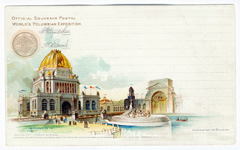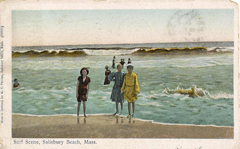| postcard | |||
| AC.DANIEL LUSTER | |||
|
[keywords] Frame. Le Corbusier. Trace. Voyerism. Displacement. Transformation. Dislocation. public and private. [background] The industrial revolution signified the coming of a new era, a point in time where modernism collided with previous modes of living and thinking thus forever changing the landscape of western culture. From its inception modernism was concerned with publicity, the act or one might say art of dissemination, recapitulation and consequent transformation of information but even more so of image. The advent of the camera as well as more advanced processes of reproduction allowed for a change in our perception of the world. It transformed the image, previously an artistic construction, into an image of the ‘real’ and has thus been responsible for influencing our perceptions of reality more than anything else since. The postcard stands at the center of this change. It represents the modern frame, the image of change. It is no coincidence that the postcard finds its inception at the World’s Columbian Exposition in Chicago in 1893,1 the consummate ending of the ‘Western Frontier’ and the beginning of a new kind of cultural movement. It is also no coincidence that Le Corbusier was consistently collecting and drawing over postcards[2], it seems to have represented something to essentially to what modernism was at its core. Beatriz Colomina points out the physiological effects of the modern city on the person, severing him into a private piece and a public piece. The postcard stands conspicuously at the intersection of these two, now disparate segments of who we are. It is exhibited in the very structure of the postcard itself, one side the ostensibly public image of some cultural event or important landscape the other a private even at times sacred message. It offers a blurring of these worlds, a system by which a culture could reestablish connections between the public and private worlds. As finite creatures we constantly seek ways of organizing, cataloguing and limiting the outside world so as to create compartments of activity, areas that we can understand. As it relates to perception the frame is that very operation in one of its most succinct forms. The frame allows for an ‘in’ and an ‘out,’ for a there and not there. The postcard is the consummate representation of the frame. In some ways to frame is the most basic of operations that man can engage in, to situate oneself on the appropriate side of the of the entrance to a cave, to establish the literal frame of the window for seeing out, to paint and ultimately to abstract the frame into argument. It is reaction, it is seeking to gain some type of control. It represents a small but somehow meaningful maneuver; to situate, to determine what is in and what is out… it is the delineation of what matters and what doesn’t, what is here and what is beyond. It gives vision of some other place but then by reproduction (in the Walter Benjamin sense) it necessarily dislocates the place from its place. It is a frame in to another world taken to all parts of our world. The postcard is a deceptively simple construct, a piece of card with an image on one side and a reverse side with the normative three lines on which one can give directions for delivery, a blank place for a stamp and the field in which a message can be written. The postcard, however, represents much more to who we are as people and is ultimately located at a central location in the continual fight between modernism and our past, between what could be and what is. It has the power capture the spirit of the place (not always of course but at certain point in history postcards have been able to succinctly display an entire countries conception of a place or people), to imbed into the memory, to advertise, to make icons, to send news home and to carry the words of a lover. [references] Robert Elwall, "Postcards from the edge," in RIBA Journal, July 2002, vol. 109, n.7,p. 118. Christine Macy and Sarah Bonnemaison, Architecture and Nature: Creating the American Landscape (New York: Routledge, 2003): 98-100. Beatriz Colomina, Privacy and publicity : modern architecture as mass media (Cambridge, Mass. : MIT Press, 1994): http://www.geocities.com/Heartland/Meadows/2487/pchistory.htm
barriers | landscapes of war | postcard | tourisms | reasonable war | american myth |
||
|
|||
|
|||
|
|||
01. Image of postcard from the Yellow Stone National Park 1957. 02. Image of original post card from the Columbian World Exposistion, 1893 in chicago. Image from chicago postcard museum. 32. Image of postcard from Salsbury. |
|||
| © university of tennessee college of architecture and design | |||


